There are many types of customer service to choose from if you want to connect with your customers to offer advice and support. But the potential of these channels is not limited to customer service alone – you can use some of them to acquire new leads who could in the future become your customers or clients.
Phone and email channels can be effectively used to initiate conversations with potential customers. And if you’re thinking about which channel should you rule out and which one to choose, then the thing is that they are not necessarily the case of either/or as both of them have their pros and cons.
What you’re going to learn:
Stop cold calling and generate your leads more effectively with chatbots
Cold calling and cold emailing – both “cold” sales methods have one characteristic in common: they are used for starting conversations with potential clients. Some would probably even add another one: they are annoying, especially the cold calling, but the fact is – the methods for lead generation are evolving.
Nowadays, communication methods and their potential to generate leads are subject to constant improvements, and cold calling and cold emailing try not to lag behind.
Phone: What is Cold Calling?
Remember that?
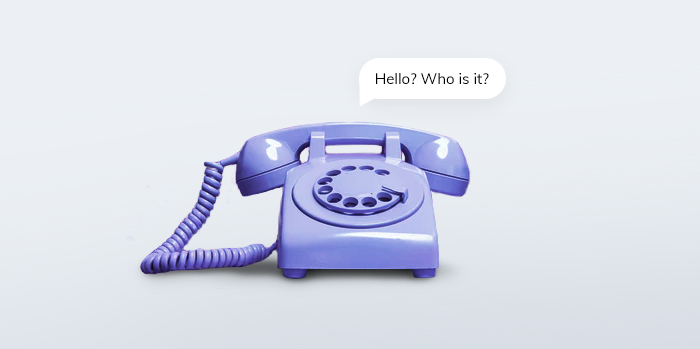
It’s a rotary dial phone, an indispensable element of nearly any household until the 1980s. It had no caller ID, no call blocker, and it could not be carried around in your pocket so someone had to be at home or work to answer it.
Any salesperson who had access to the phone, could dial the number (blindly or pick any from a phone book) and make their sales pitch. The person who picked up the phone has never contacted the company before or perhaps even heard of it, yet he or she had a salesperson on the line talking about some products or services out of nowhere.
That’s a cold call.
So in essence, cold calling is when a caller (a salesperson) attempts to solicit business from the recipient (individual private customer or business) who has never been contacted by him/her before.
Cold Calling Has Bad Reputation
There are many negative opinions about cold calling:
- It interferes with people’s daily activities – people can be reached at pretty much any time and place nowadays
- It is annoying (you can receive multiple calls during the day)
- It’s “cold”
Why is The Call Termed as “Cold”?
Because the person being called has no prior personal connection established between him/her and the company, while the salesperson usually hardly knows anything about their prospects.
One of the cold call challenges is to “warm-up” the prospect throughout the course of a conversation. The goal is to learn a few valuable facts about the person being called so the salesperson can talk on a personal level and find out how likely is the prospect to convert.
The “Cold” in a Call Started to Melt
It’s 2019 and the “cold” in the “cold call” has been dying for a while. A lot has changed in the past decades and as a result, the “cold” aspect from the cold calling was greatly reduced. The cold calling has widened its “temperature spectrum” since the prospects called are not so completely anonymous anymore.
The reason for that is that it is much easier than it used to be in the past decades to learn a fact or two about the people who are being called. Social media (Facebook, LinkedIn, Twitter) can deliver quite a lot of useful info about the prospect’s age, gender, location, preferences, etc.
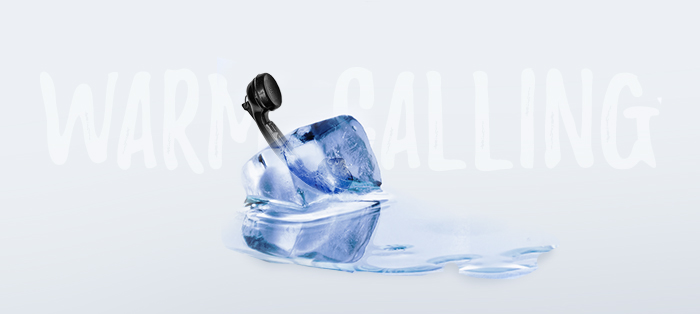
Moreover, companies that resigned from calling random people switched to so-called “warm calling” (or cold calling 2.0) – they contact only those leads who have willingly expressed some degree of interest in the company’s product or services through, for instance, email campaigns, newsletters, social media, promo events, referrals, etc.
Still, a lot of companies spend their time and resources on random cold calls, sometimes having the knowledge only about the prospect’s location (city) and nothing else.
So what other cold calling advantages are there? And equally as important, why would you want to consider a decades-old selling tactic?
Cold calling PROS
#1. Cold calls give faster responses
Pitching a product/service to a prospect and waiting for the feedback can be painstaking but no other communication channel offers as fast response times as phone. Sometimes, a single phone call is enough to pitch an offer and close the sale.
#2. You can be more personal during the cold call
Cold calls are more convenient if you want to talk with your prospect with a more personal tone. Once you know your prospect and know what he/she is looking for, you can adjust your tone as you go. The phone gives a chance to establish a certain level of personal connection that’s impossible online.
#3. You can deal with “No” immediately
During a cold call, a sales representative can immediately ask for a reason for a negative response (as opposed to waiting for another email) and figure out the solution shortly after the call, and consequently, use the insight during the calls that follow.
#4. You have a one-on-one conversation
A sales representative can fully and directly devote their attention to the prospect. As the conversation goes, the sales rep can explore the prospect’s needs that the product/service could satisfy, or figure out whether there is an interest in the product/services in the first place.
#5. You can explore more opportunities
The more you talk with people, the more you learn about their needs. If, for instance, the product/service you offer does not quite satisfy the needs of the prospect, you still gain valuable insights about the consumers and can think about the directions you want the business to grow.
#6. Cold calls can be made from home
To make a phone call, you do not need office space and sophisticated equipment so you can do this job away from the workplace.
Cold calling CONS
#1. You can frustrate the prospects
If you haven’t done your research before picking up the phone, you can end up frustrating the prospect. Nobody likes their time being wasted on something that does not fit their profile. As an example, let’s take a salesperson offering some business software: a sales is pitched to a stay-at-home mom who does not run her own company nor does her husband…
Such a cold call sounds more like someone dialed the wrong number.
Furthermore, since the call is unscheduled, you might catch your prospects at a bad time, and as a result, put them off permanently. So even if you have the greatest offer out there, people will simply not bother to hear it.
#2. You can become frustrated yourself
People hate being disturbed out of nowhere at an unexpected time of the day, so the salesperson can experience a lot of hang-ups or hear some unpleasant replies.
Furthermore, prospects can promise you anything over the phone just to get rid of you, so any follow-up actions you make may turn out to be time and effort wasted.
#3 Cold calls are difficult to handle
It is quite a challenge to speak in a positive and motivated tone, trying to be persuasive when speaking with all kinds of people.
#4. Cold calls are time-consuming
One call = one prospect. Although it was listed as a cold call advantage earlier, on the flip side, it can be a disadvantage too.
Unlike email, you cannot contact multiple contacts at the same time, so the time spent on one call is a time spent on one person only.
#5. Prospect’s numbers are difficult to get
Phone numbers are rarely published and the recent changes in the laws concerning privacy make things even more difficult.
Nowadays, businesses found a way to go about and either call randomly generated numbers or use a database of numbers illegally acquired from third-party sources.
Consumers are aware of it and when they hear from a company they have never contacted before, they are even more reluctant to have a conversation.
#6 Cold calls are expensive and time-inefficient = hard to scale up
Cold calls incur the connection costs (especially in the case of international calls) so any unsuccessful call is time and money wasted.
Secondly, it can be quite difficult to hire really good salespeople – and if you manage to find them, such professionals will not sell their skills cheap.
#7. Cold calls can harm the reputation
As mentioned earlier, cold calls can frustrate the prospects, so any negative emotions that will arise due to the unexpected call will be naturally shifted to the whole company.
Negative emotions build a negative image, and a negative image could mean a loss of respect and trust in the industry.
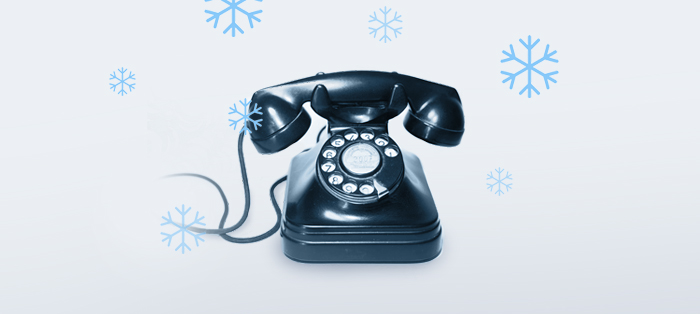
Cold Calling: Summary
Cold calling can help you connect with people that you wouldn’t otherwise be able to reach. You can speak to the prospects more personally and receive valuable instant feedback from them.
On the other hand, it can also be quite challenging for your salespeople and business.
Poor prospects research is evident when people receive phone calls about products or services they do not need – and such cold calls will rarely be appreciated by the person being called. Also, such an approach generates unnecessary costs and damages the brand reputation.
To address this issue, cold calling has been “upgraded” to cold calling 2.0 (aka “warm calling”) which is regarded as the only viable version nowadays.
So how does cold emailing compares to cold calling?
Email: What is Cold Emailing?
Cold emailing, as you may have guessed, is similar to cold calling – the only difference is that the initial contact is made through an email.
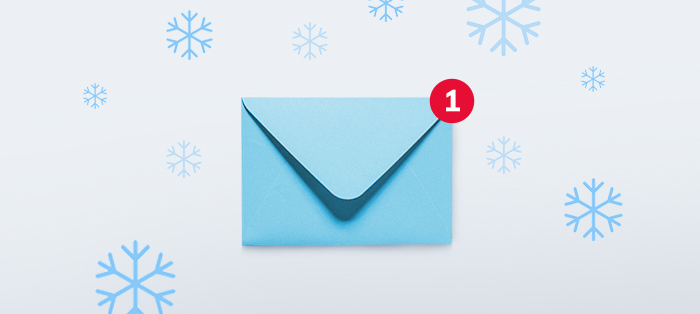
This form of contact is not limited to the sales though. Cold emails are sent by numerous professionals and individuals – marketers, job-seekers, students.
A lot of us have sent a cold email at some point in our lives, perhaps without even realizing it. For instance, an email sent by the student inquiring about the internship or employment possibilities would also be classified as a cold email.
Even in the era of chat apps and instant messaging, the amount of emails sent every day does not show any signs of slowing down – quite on the contrary, the email channel is predicted to continue to grow.
Automate Your Emails for FreeSo what cold emails are good for exactly, and what is it that makes them more convenient than phone calls?
Cold Emailing PROS
#1. Cold emails are cheap and time-efficient = easy to scale up
As opposed to cold calls, emails are a good balance between the cost and effect. If, in terms of time spent, one cold call equaled one prospect, then in the case of emails, with a single click you can send the same email to a large number of recipients.
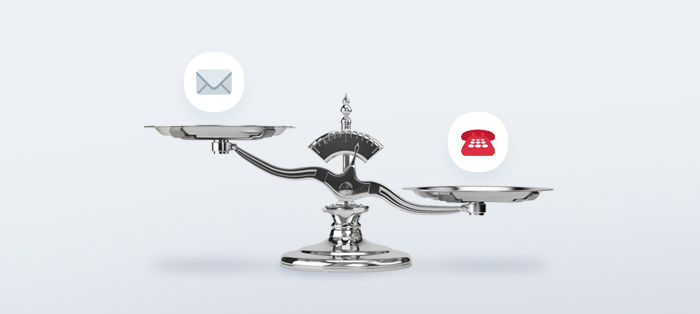
#2. Cold emails are visually attractive
It’s not only the dish that it is served matters. How it was served is very important as well.
The same goes for emails. The written message placed on a visually satisfying layout is appealing to the eye and makes the whole more attractive. If something is more attractive then there are lower chances the reader will discard it immediately.
Additionally, visually pleasant email can take away a lot of “cold” factor from it. You can also add a professional email signature to make your emails more appealing.
#3. Cold emails are more informative
What else can you do with the emails but cannot over the phone?
You can send attachments.
Attachments allow you to include more information (for example, you can attach a document, infographic, a promo material, etc) to tell a more detailed story about you, the company, and the product/service you have to offer.
On top of that, the sender is allowed more time to think about the email content or reply, and the recipient can read an email at their own pace without worrying that they have misheard or forgot something as it would be in the case of a cold call.
#4. Cold emails are less frustrating for the sender and recipient
First, the level of personal interaction is significantly lower: the salesperson does not hear nor see the actual person on the other end so both sides can distance themselves better from the email that comes across.
Secondly, cold emails can be sent and read at either party’s convenience. Incoming emails are less disruptive and can wait until they are read and responded to.
Thirdly, even if you send hundreds of emails with a very low response ratio, it can be still less depressing than hearing “No” directly from the prospects.
And finally, you can be more honest with your emotions when you type an email – no need to sound positive and cheerful because what people on the other end get will attract their eyes, not ears.
#5 Cold emails increase brand awareness
Each cold email that reaches your prospect is another step made toward potential conversion.
Even if some potential buyers do not need the products/services you sell at the exact moment they received, your email does not necessarily imply that they will not remember about your business in the future.

#6. Cold emails can be automated and tracked
You can boost your productivity with email tools that allow you, for instance, to send personalized cold emails, integrate with another app or software, use templates, schedule, queues, etc.
Moreover, you can track the number of clicks, your prospects’ replies, and any other event or behavior you find valuable to improve your marketing and sales and optimize further emails.
#7. Cold emails can be forwarded
Emails can be easily forwarded. Prospects you reached can share your deals and offers with their friends. This way your prospects who might not be interested in your deal themselves, become your brand advocates and help in finding other potential customers.
In other words, a single email intended to be sent to a certain number of people may end up reaching more prospects than originally intended.
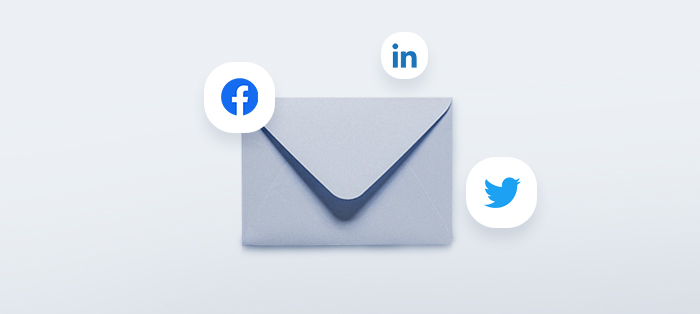
#8. Cold emails can be personal
This benefit is loosely related to the visual appeal that was discussed earlier.
A cold email can be presented in many ways. For instance, you may opt for sending a general email that would focus on your company and highlight your products and services.
But a better choice would be to make them personal. Studies show that personalized emails can generate up to 6x higher transaction rates.
Pretty impressive, huh?
To make it more personal, find out who your potential customers are (they could belong to a specific segment of prospects) and adjust the tone of the email message and layout to fit their profile.
Here, the tone of the email is something you must take care of beforehand and you can carry on with adjusting the tone only after you receive feedback from them.
Feeling unmotivated when thinking of writing sales emails that convert? Don’t worry, we got you covered with some cold emails templates to give you some inspiration for creating your own.
Cold Emailing CONS
#1. Cold emails do not yield immediate responses or feedback
Emails exchange is not as dynamic as a telephone conversation so some emails can be replied immediately, some much later, while some will be ignored or moved to the spam folder.
Another problem is – you do not know whether certain prospects will be late with their replies or they decided not to reply at all. You can, of course, send a follow-up email after a while, but this means just an extra effort.

#2. Cold emails require different skills from the sender
If cold calling was about the strong interpersonal and speaking skills, then great cold emails require great copywriting and design skills.
Even if the graphic design of the email is literally stunning, the content of the email should be equally captivating to make the prospect want to actually read it. And the other way round – if the email is poorly designed and poorly optimized in terms of size, the recipient will be reluctant to read it.
#3. Cold emails can never reach your prospects
We mentioned in the previous section about call blockers. They can block numbers that are blacklisted or have no caller ID disclosed.
Emails have similar protection – a spam filter. The algorithms that are the brain of the filters are getting better and better nowadays when it comes to recognizing spammy and harmful emails.
So keep this technical obstacle in mind when sending your emails.
#4. Cold emails can be never opened or read
While email may be a convenient way to spread out your offer, it is not undisputedly the most reliable one. Average open rates for email campaigns range between 14.92% (emails related to hobbies) and 28.46% (emails with daily deals and e-coupons).
#5. Cold emails are subject to anti-spam laws
Whenever you send a cold email, you must comply with the anti-spam legislation of your prospect’s location. Each country has its own body that issues laws concerning that issue, so for instance, if your prospects are based in the US, they would be protected by the CAN-SPAM Act, if it was Canada then the CASL would be in power, while in the EU you would need to abide the GDPR.

#6. Cold emails have huge competition
Emails are fast and easy to send – that’s an advantage but it has a downside too – pretty much anyone can send a batch of emails these days, even the spammy and badly written ones. The flood of cold emails makes the quest for attracting the attention of the prospects’ even harder.
Cold Emailing: Summary
At first glance, cold emailing seems to fill the gaps of the cold calling technique: it is faster, less disruptive, easier to scale up and measure. Similarly to cold calls, cold emails can be personalized. Properly designed and written email, however, requires a different skillset from the sender.
On the other hand, you can never predict whether the email was delivered to the inbox or spam folder, or whether it was opened in the first place. You can track the behavior of the prospects, analyze, iterate, optimize and improve your emails with each batch sent.

Cold Call vs Cold Email: Use Both
Cold calling or emailing campaigns can be time wasted if you approach your audience in the wrong way. Even the best sales pitch made over the phone and well-designed email will be for nothing if you offer products/services to the prospects who do not need them in their everyday life.
The recommended approach is to cut out the “cold” factor of the call and approach only those prospects who expressed some interest in your business.
Cold calls and cold emails surely have their advantages so the best is to consider them together. For example, you can use cold emails to get referred to the right person and afterward schedule a phone call.
“Cold” tactics are all about creating a genuine connection with your audience – your job is to reach them and address their needs with your products/services. So there is no need to limit your contact channels. After all, phone calls + emails = more communication and higher chances for your prospects to convert.

